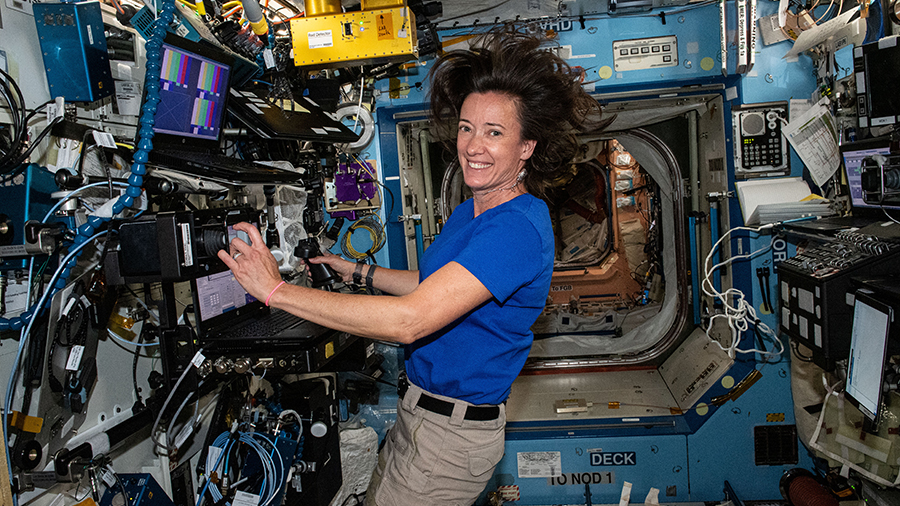Life Science, Cargo Packing Midweek Aboard Orbital Lab

Life science was the main science topic aboard the International Space Station on Wednesday. The Expedition 65 crew is also packing a U.S. cargo ship and maintaining orbital lab systems today.
Four astronauts, who rode to the station aboard the SpaceX Crew Dragon Endeavour, kicked off the day with the first health checkup of their expedition today. NASA Flight Engineers Shane Kimbrough, Megan McArthur, Akihiko Hoshide, and Thomas Pesquet spent a few moments in the U.S. Destiny laboratory module undergoing temperature, blood pressure and ear checks as part of periodic health evaluations.
Kimbrough and Hoshide then took turns loading the Cygnus space freighter from Northrop Grumman with trash and old gear before its departure in a few weeks. Kimbrough spent the rest of the afternoon setting up hardware inside the Microgravity Science Glovebox for a semiconductor crystal experiment. Hoshide serviced fluid systems and cleaned electrical hardware.
McArthur charged computer tablets delivered aboard Endeavour and organized cargo in the Tranquility module. Pesquet replaced components on the Destiny lab’s exercise cycle ahead of a space workout study planned on Thursday.
NASA Flight Engineer Mark Vande Hei collected donor samples delivered aboard Endeavour and transferred to the station’s science freezers for the new Celestial Immunity study. The experiment seeks to understand how weightlessness affects the immune system, potentially impacting the development of new vaccines and medicines.
The two cosmonauts aboard the station, Oleg Novitskiy and Pyotr Dubrov, had hearing tests today aboard the orbiting lab. The duo then spent most of the day on a variety of Russian computer and electrical maintenance tasks. Novitskiy also spent a few moments on a study investigating how international space crews get along and work together. Dubrov gathered Russian discarded items for disposal on the U.S. Cygnus resupply ship.
Mark Garcia
Powered by WPeMatico







